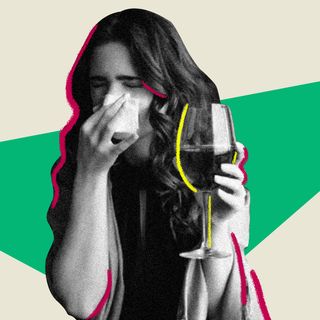The term ‘smiling depression’ has increasingly become part of mental health vernacular in recent years, offering an alternative, and perhaps more nuanced aspect of clinical depression. Smiling depression describes when a person struggling with any form of depression — from mild to severe — appears happy or content on the outside, while internally struggling with depression symptoms such as disinterest in activities that would otherwise bring pleasure, helplessness or hopelessness, and constant lethargy.
While the term ‘depressed’ is thrown around quite liberally, it’s important to remember depression can be more than momentary sadness. It’s a chronic illness, a constant state of being that can be episodic but is not temporary. We’ve come to understand depression in association with feelings of constant despair and lethargy, but mental health advocates have stressed it appears differently in different people. And in some, it’s hardly recognizable at all, at least from the outside.
‘Smiling depression,’ while a colloquial term, closely resembles an official sub-type of depression that deviates from typical depression — atypical depression, or depression with atypical characteristics. On the outside, a person with atypical depression might seem active, cheerful, high-functioning, and generally optimistic, even though these characteristics completely clash with popular notions of any depressive disorder. The atypically depressed person might appear more functional than non-depressed people on a daily basis, but still struggle with common depression symptoms while alone. This is also called high-functioning depression sometimes, although it is yet another colloquial term for what mental health advocates identify as atypical depression.
Atypical depression, which was first introduced in the fourth edition of the Diagnostic and Statistical Manual for Mental Disorders (DSM), is characterized by positive reactions to positive events, such as a compliment, or a social visit. So, while the default for a person may be run-of-the-mill symptoms of clinical depression, they are capable of responding to positive stimuli, making them seem momentarily cheerful. Other symptoms for atypical depression include overeating and oversleeping, leaden paralysis that is characterized by a heavy feeling in the arms and legs, and heightened sensitivity to rejection in interpersonal interactions. People with atypical depression might not experience chronic catatonia or melancholy, more typical symptoms of clinical depression.
Related on The Swaddle:
Prenatal Depression More Likely to Affect Women With a History of Depression, Low Self-Esteem
The complicated nature of atypical depression makes it difficult for mental health professionals to diagnose it. If a patient seems healthy on the outside, even smiling in response to positive stimuli, and for whom depressive symptoms manifest in a seemingly inconsistent way, identifying their illness and treating it becomes a fraught task. According to Harvard Health, atypical depression is also more common in women than in men — a demographic we know often downplays and internalizes their mental health issues due to patriarchal conditioning. But depression with atypical features often tends to manifest before age 20 and can last for a longer time than typical depression, to the extent it starts looking like a personality trait rather than a clinical mental health disorder, according to Harvard Health.
This serves as all the more reason for an atypically depressed person to seek help, but the stigma surrounding mental health disorders, combined with popular understandings of depression itself, deter some. “Since others don’t see their suffering, they may receive both implicit and explicit messages that they just need to deal with whatever is happening because it really isn’t that bad,” licensed therapist Justine Mastin tells SELF. “I’ve heard stories from my clients that if they disclose their suffering, they often aren’t taken seriously because they’re able to do all the things that they’re supposed to. The internalized message is that the way they feel is not a concern and that help isn’t warranted.”
So, no matter what the colloquial term to identify an ‘aberrant’ form of depression — smiling, or high-functioning — the important thing to remember is depression doesn’t manifest in the same ways in every person struggling with the disorder. And just because someone doesn’t look like they’re depressed, doesn’t necessarily mean they aren’t. Mental health is very rarely about how a person seems on the outside, but about what they are suffering on the inside.




